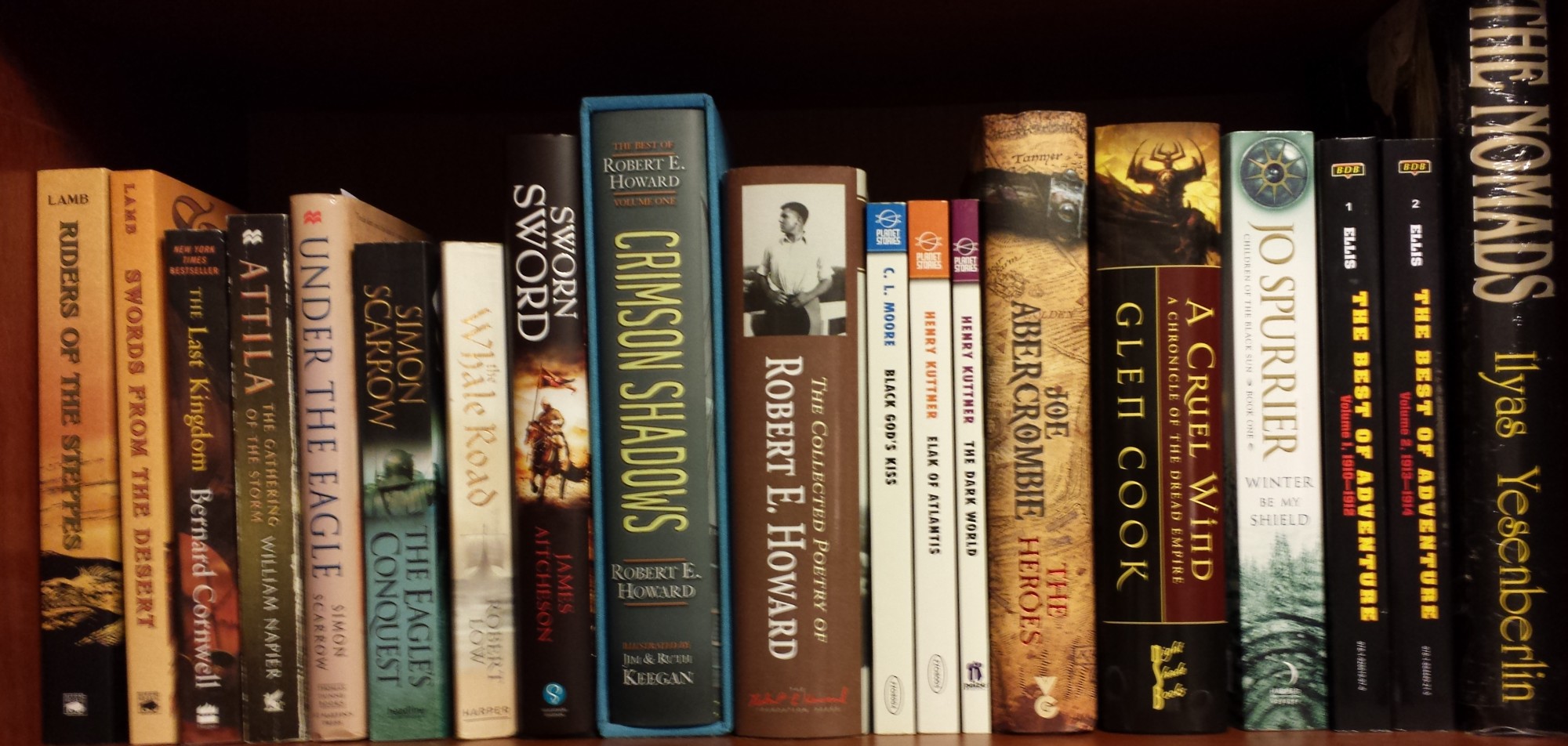Today is December 18, and I want to point out three birthdays of significance. Because today is going to be one of those days, at least schedule-wise, this will be short.
Alfred Bester (b. 1913) is better known as a science fiction writer, but he did publish some stories in Unknown, so I’ll use that as an excuse to include him here rather than at Futures Past and Present. Besides, I have another post for FPaP this evening if I can get to it. Bester is remembered primarily for the novels The Stars My Destination (which I haven’t read yet) and The Demolished Man (which is awesome). Bester also wrote some really good short fiction, especially “Fondly Fahrenheit“.
 Of the three authors whose birthdays I’m mentioning today, Sterling E. Lanier (b. 1927) is probably the most unfamiliar to modern writers. There’s been some interest in his apocalyptic sf novel Hiero’s Journey online lately. I’ve not read that one or its sequel. I have read some of the Brigadier Ffellowes stories, which are tall tale club style stories. They are currently available in electronic form, although the price ($9.99) is a bit high in my opinion.
Of the three authors whose birthdays I’m mentioning today, Sterling E. Lanier (b. 1927) is probably the most unfamiliar to modern writers. There’s been some interest in his apocalyptic sf novel Hiero’s Journey online lately. I’ve not read that one or its sequel. I have read some of the Brigadier Ffellowes stories, which are tall tale club style stories. They are currently available in electronic form, although the price ($9.99) is a bit high in my opinion.
And finally we come to the writer born today who has cast the longest shadow across the genre, Michael Moorcock (b. 1939). I’m not sure what I can say about Moorcock that others haven’t said, and said better. He’s still with us, and I’m glad to have had the privilege to have met him a few times. I’ve not read a great deal of his work, but that’s partly because he’s so prolific.
I’m not sure which of these writers I’ll read something by today. Like I said, it’s going to be busy. But I’ll try to work one of them in and report back.
 “An Ordinary Brick House”
“An Ordinary Brick House”











